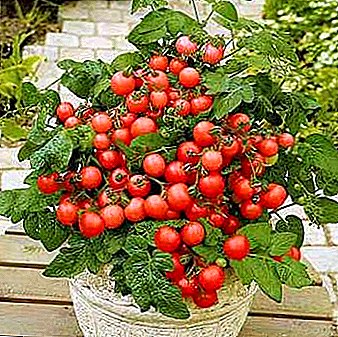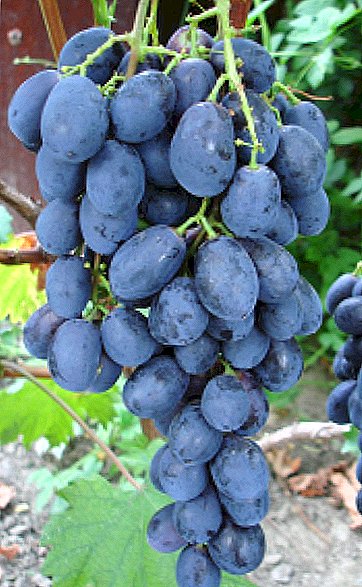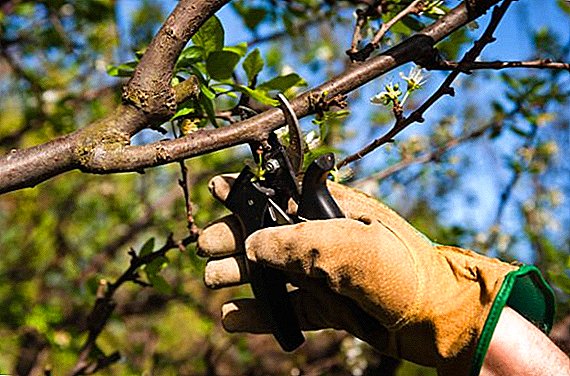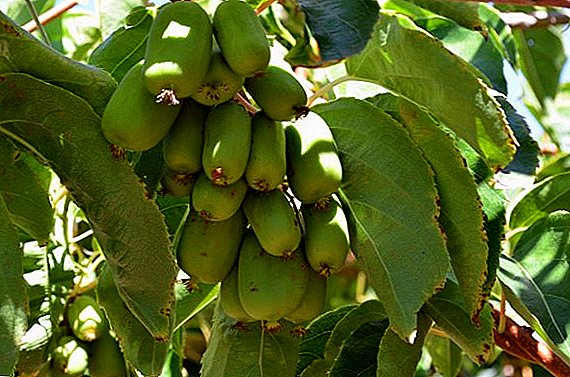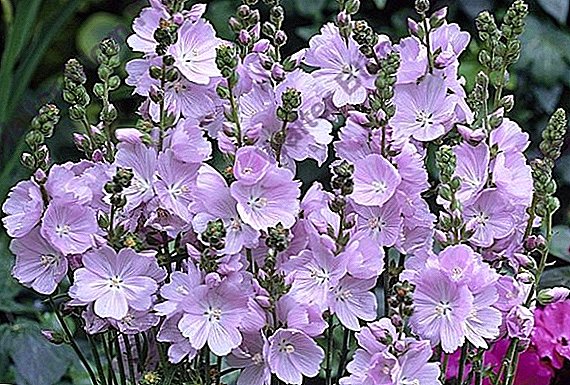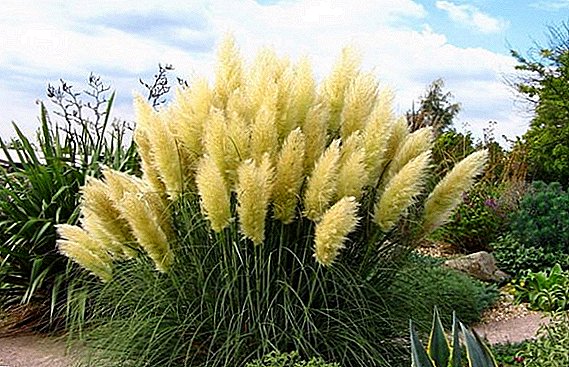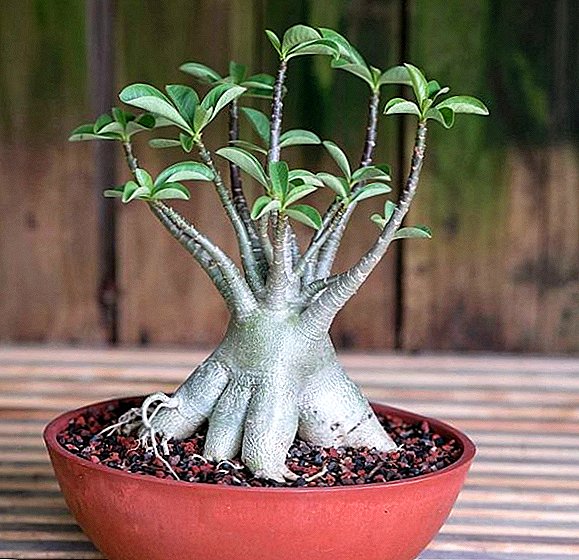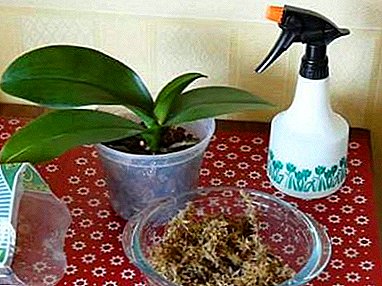
It is necessary to carefully add new components to the pot with orchid, because these flowers react painfully to changes. Particular attention should be paid to the moss - there is no unequivocal opinion among flower lovers if it damages the orchid or, conversely, is able to save it.
Today we will talk about the pros and cons of using moss for orchids, its varieties and methods of application. You can also watch a useful video on this topic.
What it is?
Moss - prostrate or erect plant without roots and flowers. First of all, it is the accumulator of moisture and its conductor to the plants. It contains little nutrients, but it has bactericidal properties and helps protect the roots from rotting.
What is it used for?
The main objectives of the application:
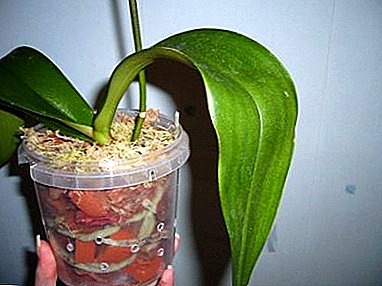 Increase humidity. Using moss as a covering layer, the substrate will be constantly wet, while watering will not increase.
Increase humidity. Using moss as a covering layer, the substrate will be constantly wet, while watering will not increase.- Getting babies. If a peduncle is cut and treated with cytokinin paste, in a container with moist moss, a process will appear from the dormant bud.
- Growing kids. Cut sprouts are placed in clean moss or in a mixture of moss and bark.
- Saving a dying plant. An orchid with rotten roots needs to be planted in the moss substrate and greenhouse conditions should be created.
- Engraftment of the roots to the block. To fix the roots on the block, you need to put moss under them. After six months, the algae will begin to grow, a precipitate of salts will come out, the moss will begin to crumble, but the orchid will already be tightly attached to the block.
- Prevent drying of young roots that have appeared above the soil. To do this, the surface of the ground must be moss. The amount of moss depends on the number of holes in the pot.
With proper use of moss, orchids will thank a grower with stable growth and lush flowering.
Pros and cons of adding to the substrate
The use of moss in the substrate has both positive and negative sides.
pros:
- antibacterial properties;
- esthetic appearance;
- assistance in rescuing a diseased plant and growing shoots;
- moisture preservation.
Minuses:
- decomposes quickly, needs to be changed 2 times a year;
- too dense layer of moss blocks access to the roots and ruins the flower;
- difficult to calculate the amount of watering that can lead to rotting of the root system;
- pests can get in the moss;
- algae formation.
Important: For beginners it is better to grow phalaenopsis without moss.
Suitable moss plants with photo
Sphagnum
 The most common species of moss, grows mainly in the Northern Hemisphere, in coniferous forests, on marshy soils and marshes. Differs gentle soft stems with needle leaves. Sphagnum contains a lot of moisture in dead parts.
The most common species of moss, grows mainly in the Northern Hemisphere, in coniferous forests, on marshy soils and marshes. Differs gentle soft stems with needle leaves. Sphagnum contains a lot of moisture in dead parts.
For orchids, it is used as a component of the substrate, the mulch layer, the drainage, the substrate under the roots when it is planted on the block. Also, sphagnum is used as an antibacterial agent and as the main substrate for reanimation of an orchid that has lost its roots.
When salting sphagnum just changes. It is from this type of moss that high-moor peat is formed - one of the components of the substrate for terrestrial orchid species.
We recommend to watch a video about the features of sphagnum moss for orchids:
Reindeer moss
 A variety of lichen, grows in different climatic zones. Motel replace sphagnum if the latter is not nearby.
A variety of lichen, grows in different climatic zones. Motel replace sphagnum if the latter is not nearby.
It is quite moisture-consuming, decomposes for a long time, but very fragile. Can be used as drainage inside softer moss.
For stability, you can add broken red brick.
Kukushkin flax
 Abundantly grows in the forest, in the meadows, alternating with sphagnum. This moss is remotely similar to the juniper branch. Kukushkin flax does not crumble when dried, does not hold moisture for long, it is easy to detect and eliminate pests.
Abundantly grows in the forest, in the meadows, alternating with sphagnum. This moss is remotely similar to the juniper branch. Kukushkin flax does not crumble when dried, does not hold moisture for long, it is easy to detect and eliminate pests.
For orchids used as a substrate or a part of it, the best option for growing plants on the block. During the collection of cuckoo flax, it is necessary to wash the lower part, as this moss easily molds.
Procurement Guidelines
Collection or purchase
Sphagnum and kukushkin flax grow abundantly in the forest and it is better to collect them yourself - only this way the quality of the product and the absence of pests will not cause doubts. In addition, it will save a little. It is better to choose the moss that forms peat cushions, they will be useful for planting a new orchid and for fertilizing an adult flower.
Board: Collect should be the top layer of the plant, without affecting the bottom. It is in the upper part contains nutrients, and from the bottom new shoots are formed.
Moss grows not everywhere, so it's easier to buy. You can also buy sphagnum and kukushkin flax if they cannot be collected. Buying moss for orchids is not difficult: it is sold in almost all flower shops.
We recommend to watch a video about collecting sphagnum and moss in the forest:
Treatment and disinfection
When harvesting moss, we must not forget that this is an excellent breeding ground for various pests, bugs and snails. That is why moss after collection must be disassembled, inspected, washed and processed. Rinse the green part, you can not wipe.
Several processing options:
- Soak it in plain water for about 12 hours, then treat with "Akarin" and keep it for another 14 days, treating the surface with water. Then dry well in the sun, allowing the insecticide to evaporate.
- Pour boiling water over the moss for about 5 minutes, squeeze a little and put to dry.
Drying
If it is not possible to dry the moss in the sun, you can collect it in small bunches and hang it to dry on a rope. Do not use an oven or dryer - the moss will not dry out completely.
Step by step instructions: how to use
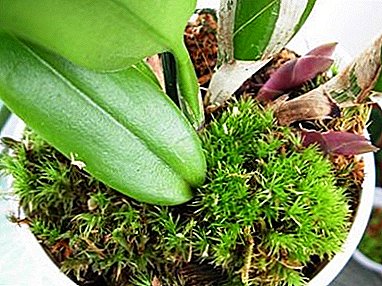 You can add moss to the pot, if the top of the soil dries quickly and the roots on the surface dry out. In the case of growing orchids in a basket, you need to cover it with moss from all sides. It is important to remember the rules:
You can add moss to the pot, if the top of the soil dries quickly and the roots on the surface dry out. In the case of growing orchids in a basket, you need to cover it with moss from all sides. It is important to remember the rules:- the moss should not lie close to the orchid;
- it should not be tightly tamped;
- the moss layer should be no more than 4 cm.
- Crushed moss can be one of the components of the substrate: the moss must be treated with mineral fertilizer, then crushed and added to the mixture, which can be poured under the root system, but not put on top.
- Moss and bark can be laid in layers, starting with the bark.
- Sometimes the orchid is grown only in moss, then the gaps between the roots in the pot must be filled with moss, and drainage should be put on the bottom of the pot.
How to moisturize?
It is inconvenient to work with too dry moss, therefore it needs to be moistened.. To do this, you can use a spray bottle, and you can put the moss into the bag the night before use, pour some water in there and tie it up - in the morning the moss will become the necessary elasticity.
What to do with a green bloom in a pot?
Sometimes in spring and summer a green bloom forms in the flowerpot of an orchid. This is algae or moss that grows on its own. They themselves are not dangerous for the flower, but serve as a signal that the pot is too wet and the environment is warm. This plaque may be due to excessive watering, caked substrate or if the pot is too large. To solve the problem you need:
- transplant orchid in a new substrate;
- wash and dry the roots;
- rinse and dry the pot;
- reduce watering.
We recommend to watch a video about the causes of green bloom on an orchid pot and getting rid of it:
Possible problems
 The most common problem when using moss, especially when growing an orchid under a lamp, is salinization of the soil. Moss takes a lot of liquid and evaporates it from the surface., this can not be avoided, even using distilled water for irrigation.
The most common problem when using moss, especially when growing an orchid under a lamp, is salinization of the soil. Moss takes a lot of liquid and evaporates it from the surface., this can not be avoided, even using distilled water for irrigation.
In this case, it is necessary to replace the moss or transplant the whole orchid, and wash the leaves with liquid fertilizer.
Moss salinization can occur not only in the pot, but also on the block. In this situation, the replacement of moss or orchid transplantation must be carried out very carefully so as not to damage the root system sprouted into the block.
How to replace the component during landing?
Orchid moss can be replaced with coconut fiber, this will help avoid algae growth and reduce salt deposition. Wet wipes or dry clay balls are sometimes also used.
Using wet wipes increases the risk of rotting.
Conclusion
Using or not using moss - individual choice of each grower. The main thing is to provide the orchid with caring care and regular watering, then it will be great to grow with or without moss.


 Increase humidity. Using moss as a covering layer, the substrate will be constantly wet, while watering will not increase.
Increase humidity. Using moss as a covering layer, the substrate will be constantly wet, while watering will not increase. You can add moss to the pot, if the top of the soil dries quickly and the roots on the surface dry out. In the case of growing orchids in a basket, you need to cover it with moss from all sides. It is important to remember the rules:
You can add moss to the pot, if the top of the soil dries quickly and the roots on the surface dry out. In the case of growing orchids in a basket, you need to cover it with moss from all sides. It is important to remember the rules: